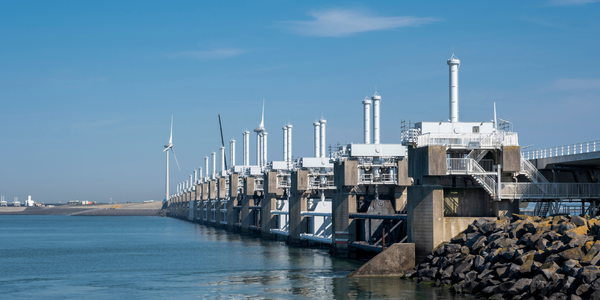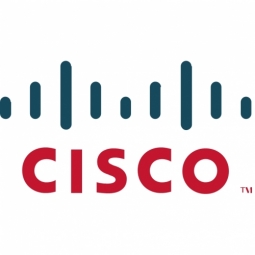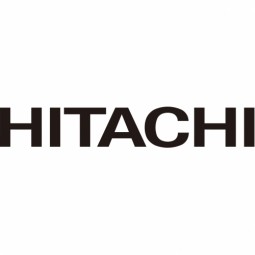Infosys

Overview
|
HQ Location
India
|
Year Founded
1981
|
Company Type
Public
|
Revenue
> $10b
|
|
Employees
> 50,000
|
Website
|
Stock Ticker
NYSE: INFY
|
Twitter Handle
|
Company Description
Infosys is a global leader in consulting, technology, and outsourcing and next-generation services. They help enterprises transform and thrive in a changing world through strategic consulting, operational leadership, and the co-creation of breakthrough solutions, including those in mobility, sustainability, big data, and Cloud Computing.
IoT Solutions
The Internet of Things (IoT) is about dissolving the layers of complexity and the intermediaries that create distance between the point of manufacturing and the point of consumption, between understanding and preventing points of failure in the manufacturing process, in machines or in critical processes, and between what the customer wants and what is delivered.
Infosys' inter-disciplinary skills and domain knowledge in engineering and IT enable them to drive efficiency, accelerate concept-to-market, and derive business insights from data in the IoT space. Their solutions span platforms, consulting services, system integration offerings, embedded and hardware solutions, and requirements definition.
Infosys' inter-disciplinary skills and domain knowledge in engineering and IT enable them to drive efficiency, accelerate concept-to-market, and derive business insights from data in the IoT space. Their solutions span platforms, consulting services, system integration offerings, embedded and hardware solutions, and requirements definition.
Key Customers
Hitachi Data Systems, Juniper Networks, Toshiba
IoT Snapshot
Infosys is a provider of Industrial IoT infrastructure as a service (iaas), platform as a service (paas), application infrastructure and middleware, analytics and modeling, networks and connectivity, sensors, and functional applications technologies, and also active in the aerospace, agriculture, automotive, cities and municipalities, consumer goods, education, equipment and machinery, finance and insurance, healthcare and hospitals, life sciences, mining, oil and gas, retail, transportation, and utilities industries.
Technologies
Use Cases
Functional Areas
Industries
Services
Technology Stack
Infosys’s Technology Stack maps Infosys’s participation in the infrastructure as a service (iaas), platform as a service (paas), application infrastructure and middleware, analytics and modeling, networks and connectivity, sensors, and functional applications IoT Technology stack.
-
Devices Layer
-
Edge Layer
-
Cloud Layer
-
Application Layer
-
Supporting Technologies
Technological Capability:
None
Minor
Moderate
Strong

Supplier missing?
Start adding your own!
Register with your work email and create a new supplier profile for your business.
Case Studies.

Case Study
IIC Connected Vehicle Urban Traffic Management Testbed
Road congestion and strained transportation networks are persistent concerns associated with the rapid urbanization of developing and developed economies. A 2015 study1 reported that travel delays due to traffic congestion led to the waste of 3.1 billion gallons of fuel and a loss of nearly 7 billion extra hours to travelers during rush hour traffic, with a nationwide cost of around $160 billion, or $960 per commuter. Alleviating traffic congestion, in addition to improving safety, is leading public and private organizations to explore new mobility paradigms such as ride-share autonomous vehicles. GOAL The goal of the Connected Vehicle Urban Traffic Management (CVUTM) testbed is to create a smart road traffic ecosystem featuring connected vehicles using vehicle-to-vehicle (V2V) and vehicle-to-infrastructure (V2I) technologies, sensor fusion, industrial IoT platforms, cloud infrastructure, and edge analytics. This testbed will serve to preempt road congestion, automatically detect unusual eventson the road, and enable cooperative movement of traffic. In due course, both autonomous and non-autonomous vehicles will participate in this ecosystem with a goal of minimizing road congestion and improve overall improving motorist and pedestrian safety.

Case Study
IIC Precision Crop Management Testbed
The global population is continuing to grow at a rapid pace placing increasing demands on the global food supply. In addition, impacts from climate change and a yearly reduction of available arable land will require the Agricultural sector to develop better ways of increasing crop yields and reducing costs. GOAL The goal for the Precision Crop Management Testbed is to create an environment where IoT solutions with the potential to impact world hunger can be developed.

Case Study
IIC Asset Efficiency Testbed
A recent study on maturity of Asset Efficiency from Infosys and the Institute for Industrial Management (FIR) at Aachen University revealed that 85 percent of manufacturing companies globally are aware of asset efficiency, but only 15 percent have implemented it at a systematic level. Current challenges include lack of instrumentation of the assets, missing real-time data analytics, lack of context due to missing information from other systems, and lack of a holistic focus with other aspects of efficiency like energy, utilization, operations, and serviceability.GOALTo collect asset information efficiently and accurately in real-time and run analytics to make the right decisions

Case Study
IIC - Water Management Testbed
The growing water shortage is regarded as the most crucial global challenge, affecting both developing and developed nations at present. Large amount of water is lost in between the point of production and receipt by end users due to leaky pipes and outdated infrastructure. This results in the loss of millions of dollars and huge wastage of such a key resource. GOAL A substantial opportunity exists to reduce the amount of water lost. As water can be lost at multiple points over a wide geographical area, Internet of Things (IoT) technology is particularly well suited to address this problem. The Smart Water Management Testbed will implement a network of real-time sensors (leakage, moisture, and water -flow detection). These will be deployed at high-risk locations across the testbed water infrastructure to reduce the amount of water being ‘lost’ by: • Rapid detection of leaks • Preemptive detection of potential leaks • Precision irrigation of watered areas

Case Study
IIC - Smart Energy Management Testbed
Energy costs continue to increase globally, driven by the depletion of fossil fuels, geopolitical instability and disruptions in the global supply chain. At the same time, organizations are constantly thriving to reduce overheads and minimize the cost of the operations. Current challenges include lack of instrumentation to get the energy consumption details and lack of tools to visualize and analyze the energy consumption patterns. This hinders stakeholders from taking any meaningful action to optimize energy consumption and reduce the overall energy cost. GOALS • Develop an ‘energy command center’ that is able to provide visibility into energy consumption across the campus • Provide various tools to compare, predict and analyze energy consumption and performance • Provide IT governance with the help of alerts, notification, workflows, ticketing and augmented reality tools to facilitate the operations

Case Study
IIC Connected Care Testbed
With extended life spans of the world's population comes an increased burden on the world's health care systems. Up to 80% of older adults have at least one chronic health condition that requires continual treatment management. With the advent of accessible IoT technologies, health care providers are now able to access patient remote monitoring and health informatics that can make management of these populations more cost effective and increase the quality of care. However the slow pace of technology adaptation and proprietary solutions among medical device manufacturers makes it difficult for caregivers to implement a cost-effective IoT solution for patients which can bring together all pipelined stages of patients' treatment, from initial diagnosis through lifetime disease management. GOAL To develop an open IoT ecosystem for clinical and remote medical devices that can bring together patient monitoring data into a single data management and analytics platform.
Similar Suppliers.

Supplier
Cisco
Cisco designs and sells broad lines of products, provides services, and delivers integrated solutions to develop and connect networks around the world, building the Internet. Over the last 30 plus years, they have been the world’s leader in connecting people, things, and technologies - to each other and to the Internet - realizing their vision of changing the way the world works, lives, plays, and learns.Today, Cisco has over 70,000 employees in over 400 offices worldwide who design, produce, sell, and deliver integrated products, services, and solutions. Over time, they have expanded to new markets that are a natural extension of their core networking business, as the network has become the platform for automating, orchestrating, integrating, and delivering an ever-increasing array of information technology (IT)–based products and services.Subsidiaries/ Business Units: - Jasper - OpenDNS - CloudLock

Supplier
IBM
IBM is an American multinational technology and consulting corporation that manufactures and markets computer hardware, middleware, and software, and offers infrastructure, hosting, and consulting services in areas ranging from mainframe computers to nanotechnology. IBM is intent on leading the development of a global data field.

Supplier
Honeywell
Honeywell invents and manufactures technologies to address some of the world’s toughest challenges initiated by revolutionary macrotrends in science, technology and society. They improves business performance for customers with automation and control solutions, equipment and services that enhance safety, reliability and efficiency. Year founded: 1906 Revenue: $40.3 billion (2014) NYSE: HON
_1.jpg)
Supplier
Bosch
Bosch is an industry leader in automobile and industrial equipment, as well as consumer goods and building systems. Bosch operates via 440 subsidiaries in 60 countries; its core lines include mobility (auto) systems, from diesel/hybrid drive to steering, starter motors and generators, electronics, and brakes.Year founded: 1886Revenue: $58.7 billion (2014)Portfolio Companies:- Bosch Software Innovations- Rexroth- Deepfield Robotics- Escrypt- ProSyst

Supplier
Hitachi
Hitachi is a highly diversified company that operates eleven business segments: Information & Telecommunication Systems, Social Infrastructure, High Functional Materials & Components, Financial Services, Power Systems, Electronic Systems & Equipment, Automotive Systems, Railway & Urban Systems, Digital Media & Consumer Products, Construction Machinery and Other Components & Systems.Year founded: 1910Revenue: $94.0 billion (2014)TYO: 6501







